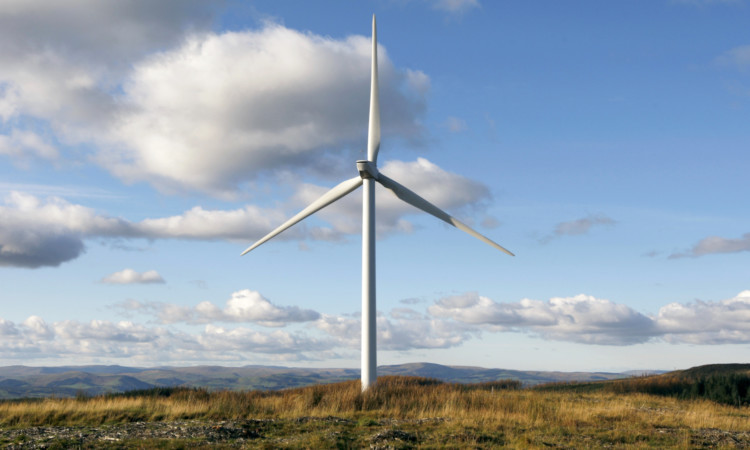
High winds on Sunday were strong enough to power the equivalent all of Scotland’s electricity needs for the day, according to environmentalists.
The Met Office issued a yellow “be aware” weather warning covering much of the country on August 7 as wind speeds reached 115mph on the top of the Cairngorms and gusts of more than 60mph hit towns in the north.
The weather brought travel disruption, with some bridges closed, ferries cancelled and trains affected but helped boost the country’s renewable energy production.
Environmental group WWF Scotland said an analysis of data by WeatherEnergy shows wind turbines in Scotland generated power equivalent to more than cover the entire country’s electricity needs.
Turbines in Scotland provided 39,545 megawatt-hours (MWh) of electricity to the National Grid on Sunday while the country’s total power consumption for homes, business and industry was 37,202 MWh – meaning wind power generated 106% of Scotland’s electricity needs.
WWF Scotland director Lang Banks said: “While Sunday’s weather caused disruption for many people, it also proved to be a good day for wind power output, with wind turbines alone providing the equivalent of all Scotland’s total electricity needs.
“This major moment was made possible thanks in part to many years of political support, which means that across the year now renewables contribute well over half of our electricity needs.
“However, if we want to ensure we reap the many benefits of becoming a low carbon economy, we need to see this political support for renewables continue.
“We also need the Scottish Government’s forthcoming energy strategy to set a goal of securing half of all of our energy, across electricity, heat and transport, from renewables by 2030.
“While it’s not impossible that this has happened in the past, it’s certainly the first time since we began monitoring the data in 2015 that we’ve had all the relevant information to be able to confirm it. However, on the path to a fully renewable future, this certainly marks a significant milestone.”
Karen Robinson, of WeatherEnergy, said: “Electricity demand during weekends is usually lower than the rest of the week.
“Nevertheless, the fact that wind power was able to generate the equivalent of all Scotland’s electricity needs shows just how far renewables have come.”
READ MORE
Meet the woman who’s afraid of wind turbines
Power struggles: Smaller energy suppliers don’t guarantee good service

Enjoy the convenience of having The Sunday Post delivered as a digital ePaper straight to your smartphone, tablet or computer.
Subscribe for only £5.49 a month and enjoy all the benefits of the printed paper as a digital replica.
Subscribe